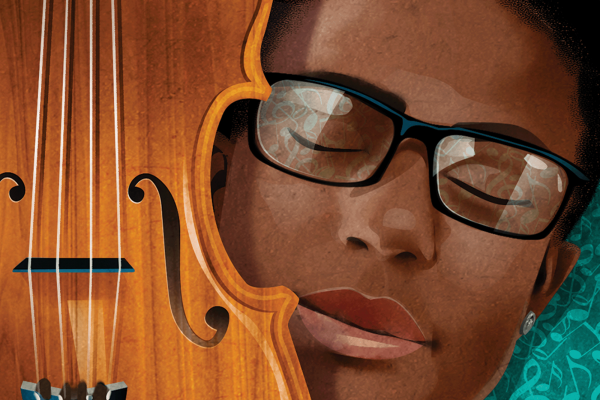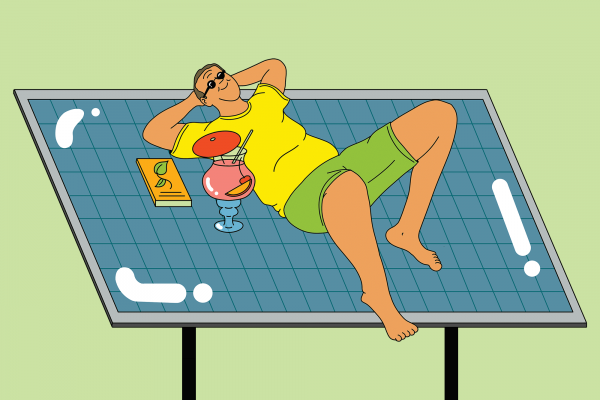Wandering through Florence’s Piazza del Duomo, Sydney’s Circular Quay, or Barcelona’s Sagrada Familia neighborhood, it’s easy to mistake architecture for a form that describes ethics as well as beauty. One almost can’t help but feel small and incomplete in the presence of such awe-inspiring spaces.
But visitors won’t make that error as they walk through the Royal Ontario Museum’s “The Evidence Room” (through Jan. 28), which examines the aesthetic design of Nazi concentration camps. They represent, as a wall text notes, “the greatest crime committed by architects.”
In the main gallery, all the objects are painted white — these models and casts depicting a gas column and a hatch and a door from Auschwitz. Dozens of other casts depict everything from blueprints to contracting bills.
One doesn’t typically think of German contractors actually billing their hours for building the gas chambers, and the mundane details of it all amplify the grotesque horror of it.
“There is no Hippocratic Oath that architects ever take, as doctors do, to ‘do no harm,’” Gavriel Rosenfeld, a Fairfield University history professor who studies Nazi German history and memory, said. “Architects are notorious for being willing to work for any and all political regimes, no matter what their coloration.”
“I’d work for the devil himself,” renowned American architect Philip Johnson famously said.
He may have been exaggerating, but the architects who designed for the Nazis almost literally worked for the devil himself.
Those architects thought they were making the world a better place, Duke University art history professor Paul Jaskot, author of The Architecture of Oppression, said.
“They thought they were contributing to something that was ideal and pleasing. From their perspective, they went to architecture school to do exactly this kind of project, to create a world that was really, for them, culturally superior to the one that they occupied.”
An exhibit like “Evidence Room” requires some recalibration of viewer expectations, both about what has motivated architects who worked for fascist regimes, and more broadly about what art and architecture are — and what they are not.
“When we go to a museum exhibition, we assume that we are seeing works of art and architecture that are expressions of the best that humanity is capable of — that these aesthetic or artistic decisions are also ethical ones,” Jaskot said.
“This exhibition quite firmly reminds us that many objects, and particularly architecture, are aesthetic monuments, but are also very much related to policies of oppression and moments of exploitation.”
Oppression and exploitation are certainly what went into creating the gas chambers, and “Evidence Room” from the start alerts visitors that the show creates a particular sort of atmosphere. A sign outside the show reminds viewers that they’re entering a kind of sacred place. “For the experience of all visitors,” it states, “please respect the space.”
The cast of the Zyklon B gas column, which is enclosed with metal grating, suggests violence immediately, although some of the other objects are attractive until visitors take a closer look. The column is scholars’ best guess of the real gas towers’ actual design, according to Jaskot. “We don’t actually know what that looked like,” he said. “It’s very accurate, but it can never be complete.”
Nevertheless, mappings like “Evidence Room” help people better understand the Holocaust.
“We need to try to imagine if we are going to understand. We need to try to get to that place,” Jaskot said. “But the ethical problems of a hyper-realistic environment, like a virtual reality — this has to be carefully contextualized.”
For young people, who think of digital environments as natural, it’s important to probe the ways that virtual realities actually work, and the impact that they have.
To address that question, Jaskot and a colleague who is part of Holocaust Geographies Collaborative created a three-dimensional model of Auschwitz, which they fed into a virtual reality environment. But when they tested it, they encountered the sorts of problems that they’d feared.
“It’s a kind of gaming environment. You feel like you’re in an arcade, and it’s not the kind of respect and somber, critical view that you want,” Jaskot said.
“At the same time, I’ve never in my life experienced something that allows you to understand the scale of Auschwitz, which is massive. That experience of scale is a very important thing.”
To Jaskot, the answer isn’t either-or, but a mixed method, that seeks a complete picture by using virtual reality, documents, photos, secondary sources, and survivor testimony.
“Evidence Room,” with its clean, white look, does aestheticize the objects it displays, but that’s something that would be inherent in any such display, according to history professor Rosenfeld. Debates abound, he said, about what kind of “box” one ought to put a Holocaust museum in. Some museums, like the U.S. Holocaust Memorial Museum, evoke concentration camp iconography in their architecture, while others, often ones that are closer to authentic Holocaust sites, are more minimalist and restrained. Those exhibits avoid what Rosenfeld called a “Disney-ification” effect.
“Whether it’s the postmodern iconographic approach or whether it’s the minimalistic modern approach, both forms of display end up aestheticizing the topic no matter what,” he said. “It’s just one is in one direction and one’s in another direction.”
Jaskot, who recently spoke about “Using Digital Humanities to Understand the Architecture of the Holocaust” at New York’s Frick Collection, agreed that the show is beautiful, but he said it is also deeply rooted in history.
“This show is really unique, in that it brings together both the architectural models done in a very aesthetic way at the same time that it’s based on this horrible historical moment,” he said. “This kind of exhibition, I think, has actually not been done before, and I don’t see it being repeated anytime soon.”
Many of the architects of the German Bauhaus design school, including Walter Gropius and Ludwig Mies van der Rohe, fled to America, but their exile was complicated.
“They were initially willing to work for the Nazis, but the Nazis didn’t like their style of architecture, which was very modernist,” Rosenfeld said. “Had the Nazis been more open-minded, it’s entirely likely that these architects would have stayed in Nazi Germany and built for the regime like (Hitler’s chief architect) Albert Speer did. To get job in a one-party state, you need to get close to the party. …you can’t really be that moral if you want to work.”
That’s true of painters and poets as well, but it’s particularly the case for architects, who need significant financial backing to get anything built.
“Architects have built prisons, they’ve built gas chambers. They’ve built pipelines to destroy our environment. They’ve built factories that pollute,” Rosenfeld said. “They’ve also built public housing, hospitals, and all kinds of really admirable structures.”
During World War II, the Nazis forced tens of thousands of slaves to work in stone quarries. Considering the ethical problems around that kind of forced labor is akin to thinking about corporations using assembly lines in China to make iPhones.
To Rosenfeld, those ethical questions are the main takeaway of the exhibit. “It’s a social consciousness about how the products that we spend our lives around are manufactured,” he said.
It’s easy to associate the worst crimes of the Nazi regime with the leading villains — Adolf Hitler, Hermann Göring, Heinrich Himmler, Joseph Goebbels. But it took countless faceless bureaucrats, sitting in offices, pushing paper, and drafting plans, to enable the Nazi state. The manufacturer J.A. Topf built the crematoria, and coal miners and steel makers produced raw materials for the machinery of the concentration camps.
“A lot of people just do their jobs on a daily basis not thinking about what their small segment of the task is being used for,” Rosenfeld said. “We should be conscious of that.”
Got something to say about what you're reading? We value your feedback!







